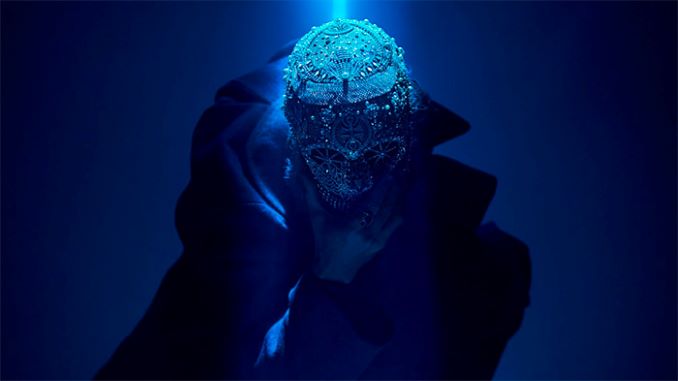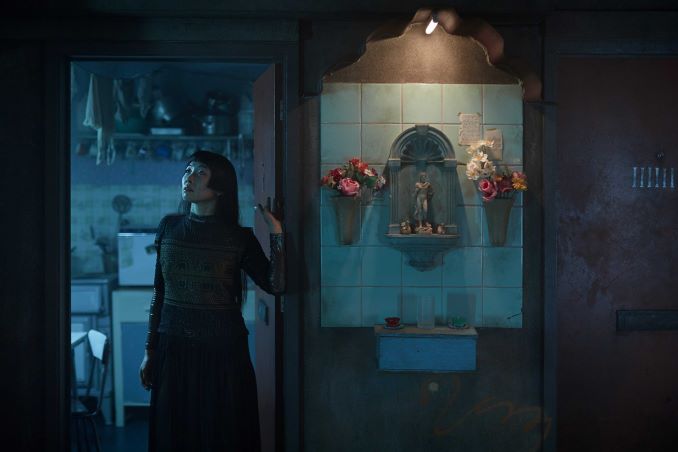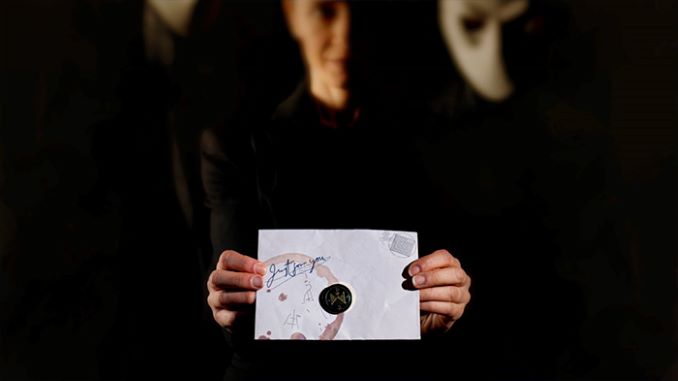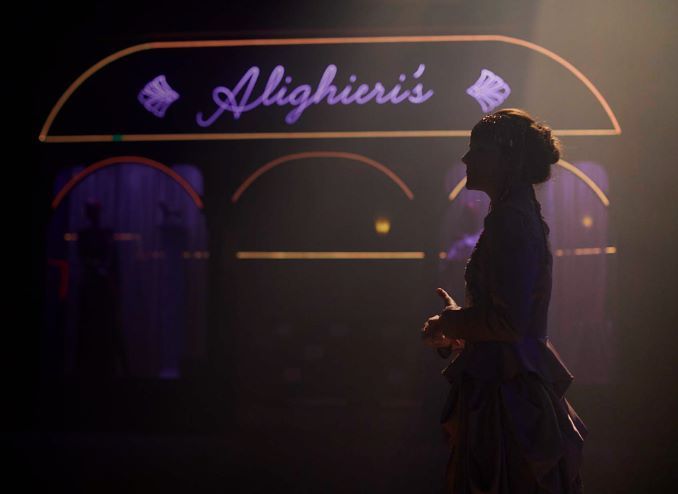The single most exhilarating theatrical event I ever experienced took place in London in 2013.
Punchdrunk Theatre’s immersive, site-specific The Drowned Man featured a cast of forty performers inhabiting an enormous, impressively detailed world (staged in a sprawling former postal facility), made up of dozens of rooms, alleyways, and other, more hidden spaces. Audience members – all brilliantly anonymized by the wearing of identical ghostlike masks – were free to explore that world (loosely inspired by Georg Büchner’s 19th century tragedy Woyzeck), whether to follow a particular character or storyline, or to branch off on their own to uncover its innumerable secrets.
It has been nearly a decade since The Drowned Man. Since that time, Punchdrunk’s seemingly eternal staging of the Macbeth-like Sleep No More has continued to sell out in New York City, all while London waited – and waited (and waited) – for Punchdrunk to debut its next major work back home. Side projects – the hyper-exclusive Kabeiroi, the bizarre Jude Law TV series The Third Day (which culminated in a 24-hour livestream from the show’s fictional island setting) – have kept Punchdrunk somewhat active, but also kept it away from what it does best.
The Burnt City, Punchdrunk’s triumphant return to form, is the show audiences have been waiting for. Even if its labyrinthine setting – and even more labyrinthine plot – can be overwhelming, it is, to borrow from the Greek tradition which inspired City, the apotheosis of Punchdrunk’s dazzlingly immersive brand of site-specific theatre.
In other words, The Burnt City is incredible, and unlike anything you have ever encountered.

Staged across two colossal, multi-storey warehouses that once served as armouries, Punchdrunk has managed to create a plausibly real space, one that feels lived in, detailed, and authentic. Taking inspiration from the Trojan War – specifically, two plays by classical Greek tragedian Euripides – The Burnt City reimagines and interpolates those events as a darkly dramatic immersive dance/theatre performance with a deliberately timeless aesthetic.
As is Punchdrunk’s trademark, audience members don ghostlike masks, then are given only the most perfunctory of introductions by a gleefully menacing “host” (the spoilerish identity of that character being one of the show’s many delights) before being set loose in the title city.
Across three hours, audience members are free to explore the setting at leisure, sometimes getting lost in its darkest corners, sometimes following a particular character or characters to see where the plot takes them. The cast of mostly dancers (there is very little in the way of dialogue) is easy to identify: they are the only ones without masks, and they typically have a horde of ghosts (audience members) following closely behind them.

In The Burnt City, every character has their own narrative agency, and the choice to follow this main character over that side character will result in a unique visit for every audience member. So too does the choice to not follow any character at all, but spend time – as much or as little of it as you want – exploring the world itself. Indeed, much of the fun of The Burnt City is in poking and prodding, voyeuristically, through the dozens if not hundreds of spaces which have been lovingly realized by Punchdrunk’s incredible production team.
That said, The Burnt City also does a remarkable job of funnelling audiences towards important details. The opening rooms, for example – including the lobby before you enter the show proper – contain extremely important hints that are worth paying attention to. Characters also tend to converge at key moments, such that even if you follow the most tertiary of side characters, they (and you) will arrive in time to bear witness to at least some of the major narrative developments. The lighting and music cues also do a decent job of prodding audiences in the right direction, though you’re just as free to resist the urge to go where the main action is, with equally compelling rewards for those who wander off the beaten path.

A piece of friendly advice is in order, however: attend The Burnt City with, and immediately split up from, a friend, so you can compare notes afterwards. Between the two of you, you will find that you each have valuable information – separate scenes you’ve witnessed, aspects of the world you’ve uncovered – which you would never have picked up on all on your own.
 The Burnt City. [Image courtesy Punchdrunk 2023.]
The Burnt City. [Image courtesy Punchdrunk 2023.]
The Burnt City is not for the faint of heart. Not only does it trade in some very serious, very mature themes (anyone who’s superficially familiar with Greek tragedy can hazard a guess), it is also willing to make audiences feel uncomfortable. There is nudity in The Burnt City. There is blood. There is darkness, and unsettling content, and the insidious feeling that the next door you open could contain something horrible – or, by the same token, something beautiful or magical. Part of the marvel of The Burnt City is that you are never quite at ease: you may think you’ve mentally mapped out your environs, or where the story is headed next, but you will undoubtedly find yourself surprised – occasionally shocked – by what Punchdrunk has in store.
For all its vastness, The Burnt City is also surprisingly intimate, affording, nay, encouraging, the minute, the individualized. Maybe it’s that moment where, alone in a room, you stumble upon a letter containing a key revelation about a character. Or maybe it’s that feeling you get on the back of your neck when you come across a secret passage, or when you walk in on a character, utterly alone, going about their business as if you aren’t there. Even if you actively seek to avoid such moments, The Burnt City is structured in such a way that you’ll encounter them anyway. Rarely has getting lost in a back alleyway felt so invigorating.
The anonymity of your fellow ghost-masked audience members is also key to the whole experience. Indeed, The Burnt City would not work without its audience, and some of its best moments come from opening a door on a mystical tableau in which a single actor stands surrounded by silent, watchful ghosts.

Some of those moments felt deeply, profoundly, personal. Some, surrounded by other “ghosts”, were so transcendently magical that I almost wish I knew who my fellow spectators were, so we could form a group to keep talking about what we experienced. (There’s one moment in particular, at the intersection between the Greek and the Trojan narratives, that’s so stunning that Punchdrunk does everything short of grabbing you by the arm to make sure you see it.)
If there are any failings to The Burnt City, they are few and far between. Yes, it probably could benefit from an explanatory note, similar to the one Punchdrunk started handing out at the start of The Drowned Man after audiences complained about its impenetrability. No, The Burnt City did not need a Porsche product placement – the one false, fourth-wall-shattering note in an otherwise impeccably immersive experience. Yes, some audience members might be annoyed that, at the end of three hours, they are left to furiously google Greek mythology to understand precisely what the hell they just saw. (Though, in my view, that’s all part of The Burnt City‘s charm.)
Still, if the idea of three hours of complete and utter immersion – did I mention they take your phone away before the show? – in a fantastical world sounds appealing, there is truly nothing better than The Burnt City. It is the most exciting theatrical event in recent memory, and the best reason to visit the UK this year.
***
For tickets to Punchdrunk’s The Burnt City, click here.
For an immersive experience closer to home, we’re big fans of Outside the March, which combines site-specific performance with a progressive ethos to tell fascinating, compelling stories featuring diverse characters. Check out Outside the March here.



